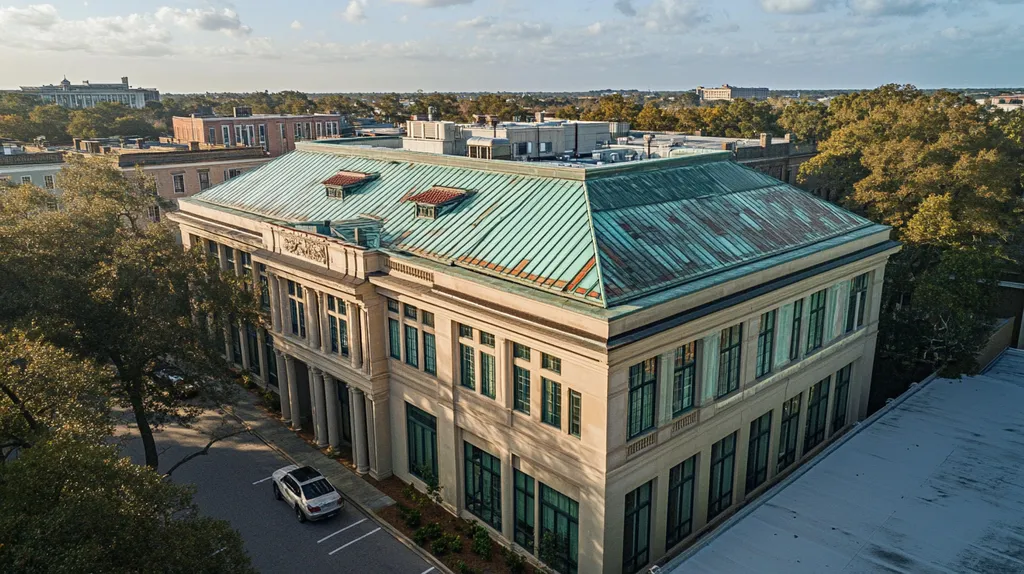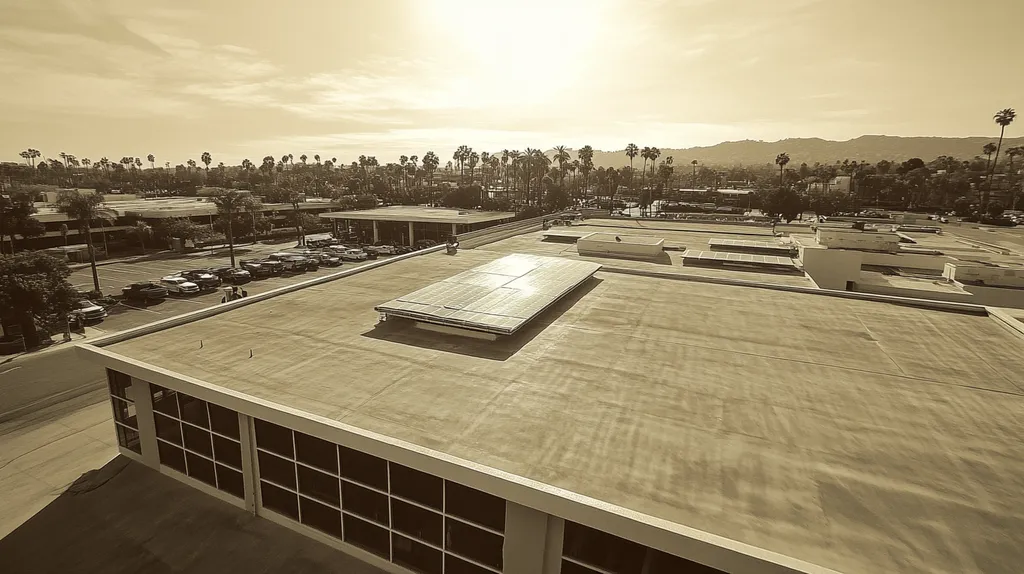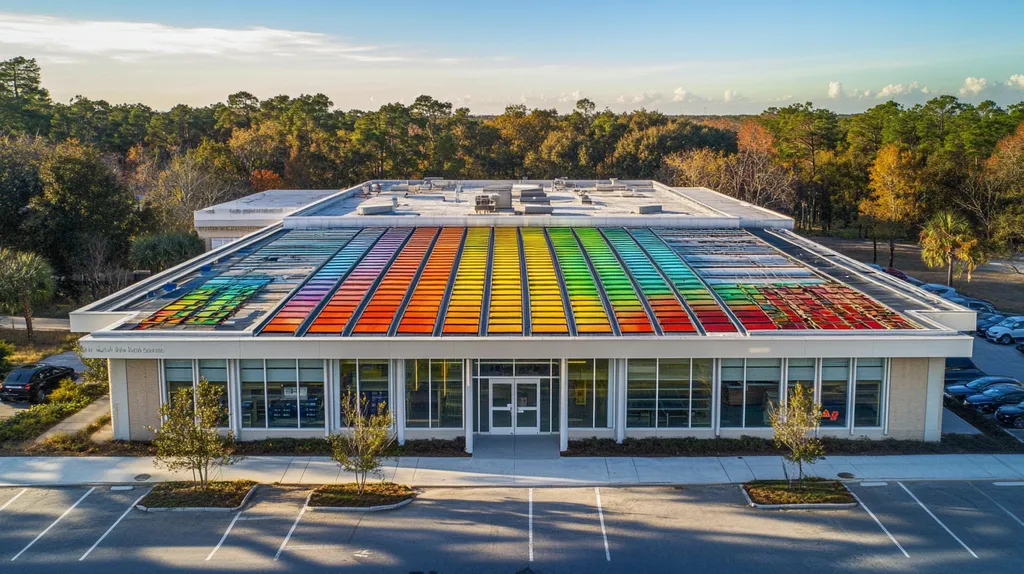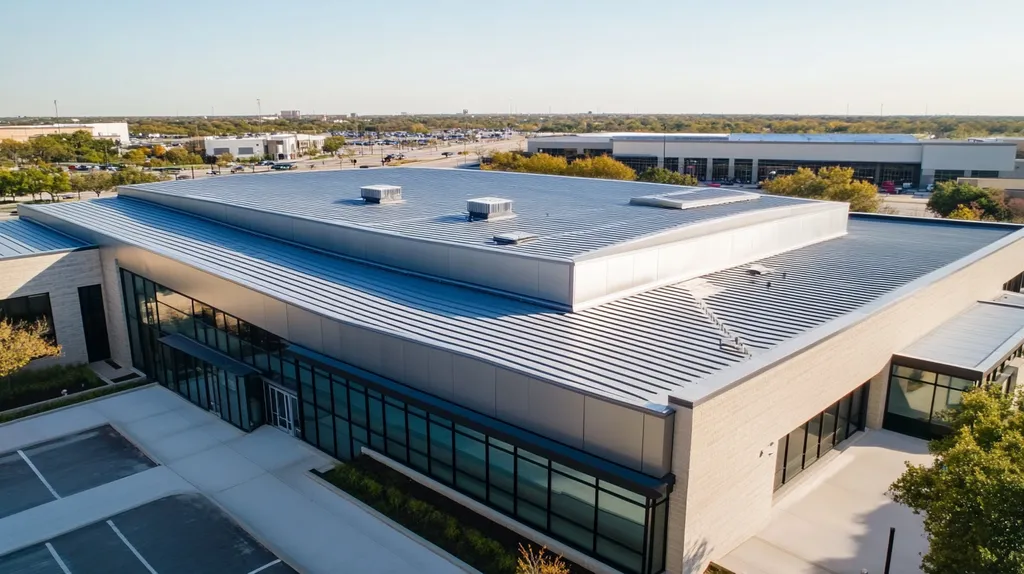In today’s industrial facilities, inadequate monitoring of rooftop equipment leads to energy losses exceeding $270,000 annually for the average 50,000-square-foot building. The U.S. Department of Energy reports that 30% of HVAC systems operate inefficiently due to poor maintenance and monitoring practices.
For facility managers, establishing comprehensive monitoring protocols is critical for preventing equipment failures, reducing operational costs, and ensuring regulatory compliance. This emerging challenge requires a systematic approach to performance tracking and preventive maintenance.
This guide provides facility managers with actionable solutions across six key areas: performance monitoring, financial considerations, compliance requirements, risk management, operational procedures, and long-term planning strategies.
SECTION 1: PERFORMANCE FACTORS
The performance of rooftop equipment is crucial to the operational efficiency and budget of industrial facilities. Ineffective monitoring and maintenance can lead to energy losses of up to 30%, as noted by the U.S. Department of Energy. By grasping key performance factors, facility managers can enhance equipment operation, cut costs, and prolong the lifespan of rooftop assets. This section delves into energy consumption monitoring, temperature and humidity control, and equipment cycling and runtime.
Energy Consumption Monitoring
Monitoring energy consumption is essential for spotting inefficiencies in rooftop equipment. When energy usage goes unchecked, operational costs can balloon unexpectedly. Conducting regular energy audits helps managers identify which equipment is consuming more energy than necessary.
Utilizing advanced metering technology allows for real-time energy usage data, facilitating prompt adjustments before costs escalate. For instance, knowing peak consumption periods enables managers to schedule operations during off-peak hours, thus lowering energy bills.
Integrating energy management software can compile data from various applications, providing insights that enhance decision-making and overall efficiency. Quick identification of unusual spikes in consumption can prevent wasteful expenditures and costly repairs.
Key Action Items
Temperature and Humidity Control
Maintaining appropriate temperature and humidity levels is vital for maximizing rooftop equipment efficiency. Fluctuations in these conditions can undermine equipment performance and durability. Continuous monitoring allows facility managers to take corrective action when levels deviate from the ideal.
For instance, HVAC systems exposed to high humidity may face corrosion and decreased efficiency. Employing environmental sensors to gather real-time data helps managers adjust systems based on current conditions, significantly cutting maintenance costs.
Moreover, effective temperature regulation enhances energy efficiency, ensuring that equipment operates within optimal conditions, thus avoiding premature failures. By understanding these dynamics, facility managers can boost performance and reliability.
Key Action Items
Equipment Cycling and Runtime
The cycling and runtime of rooftop equipment significantly affect operational efficiency. Excessive cycling can cause unnecessary wear and inflate energy costs. Monitoring these patterns is essential for optimizing equipment performance.
By analyzing equipment runtimes, facility managers can identify optimal operating conditions. Frequent start-stop cycles may indicate underlying issues, and continuous tracking can reveal these inefficiencies, aiding strategic planning.
Establishing operational parameters can help to minimize excessive cycling. By refining settings based on performance data, managers can enhance equipment durability and reduce operational costs. Well-maintained systems operate more reliably and efficiently.
Key Action Items
SECTION 2: FINANCIAL CONSIDERATIONS
Grasping the financial implications of monitoring rooftop equipment is vital for facility managers. Ignoring this oversight can balloon operating costs and lead to unexpected repair bills. Studies show that improper maintenance can hike expenses by over 30%. By prioritizing performance monitoring, facilities can manage costs more effectively and improve overall efficiency. This section focuses on three critical financial areas: operating costs, maintenance expenses, and potential energy savings.
Operating Cost Analysis
In a competitive market, controlling operating costs is essential for any facility’s success. Effective monitoring of rooftop equipment can streamline processes and significantly cut these costs. For example, regular evaluations of HVAC systems—responsible for nearly 40% of energy usage—allow managers to spot inefficiencies promptly.
By leveraging performance data, managers can identify trends that indicate potential failures, preventing costly downtime and fostering smoother operations. Lower operational costs can also enhance a property’s appeal to prospective tenants or buyers.
Additionally, employing predictive maintenance can avert unexpected disruptions. Consistent performance measurement aids efficient resource allocation, keeping budgets on track and ensuring the facility runs smoothly.
Key Action Items
Maintenance and Repair Expenses
Unchecked rooftop equipment performance can quickly inflate maintenance and repair costs. Lack of routine inspections may lead to serious, unexpected issues. Alarmingly, 50% of equipment failures arise from insufficient maintenance, leading to expenses that could have been avoided.
By integrating a monitoring system, facilities can obtain timely diagnostics that prolong equipment longevity and decrease repair frequency. Diligent monitoring can yield significant savings by identifying problem areas early on.
Additionally, a well-structured maintenance plan based on actual performance data optimizes resources, fostering budget control and an efficient operational workflow that minimizes costly emergency repairs.
Key Action Items
Energy Efficiency Savings
Energy efficiency is a key opportunity for cost savings in industrial facilities. Inefficient rooftop systems can waste significant amounts of energy, driving up operational costs. The U.S. Department of Energy indicates that poorly maintained systems consume up to 30% more energy compared to well-monitored ones.
By meticulously tracking performance metrics, facility managers can pinpoint inefficient systems and implement corrective actions. Strategies like retro-commissioning can enhance equipment efficiency, leading to substantial energy bill savings.
Moreover, integrating performance monitoring with energy management systems provides crucial insights into energy consumption patterns. This empowered approach enables managers to make informed decisions regarding energy-efficient upgrades, fostering long-term savings and contributing to sustainability goals.
Key Action Items
SECTION 3: COMPLIANCE REQUIREMENTS
Neglecting compliance requirements in the monitoring of rooftop equipment can result in severe penalties and costly repairs. Alarmingly, recent industry surveys indicate that over 40% of facilities face fines due to noncompliance. Understanding and adhering to regulatory standards, safety regulations, and environmental compliance is crucial for protecting assets, ensuring uninterrupted operations, and minimizing legal liabilities. This section outlines the key compliance challenges that facility managers must address.
Regulatory Standards and Codes
Regulatory standards and building codes are vital for guaranteeing safety and functionality in roofing systems. Compliance with the Occupational Safety and Health Administration (OSHA) guidelines is essential for safe rooftop access and equipment operation. Noncompliance can lead to hefty fines and increased liability in case of workplace accidents.
Facility managers must stay informed about local building codes that include specifications for wind resistance, seismic conditions, and fire safety measures. For example, facilities located in high-wind regions have stricter standards to minimize equipment damage. Regular assessments against these standards can help prevent costly renovations in the future.
Additionally, the International Building Code (IBC) offers baseline requirements addressing structural integrity and durability. Familiarity with these guidelines aids in selecting the right roofing systems that align with safety and performance standards. Regular audits and comprehensive documentation are also essential for demonstrating compliance during inspections.
Key Action Items
Safety and Health Regulations
Adherence to safety and health regulations is crucial in monitoring rooftop equipment performance. Following established safety protocols protects personnel from potential hazards posed by rooftop work. Regular safety training and strict adherence to protocols can significantly reduce workplace incidents, as evidenced by lower accident rates in facilities that emphasize safety.
Compliance involves performing risk assessments before allowing rooftop access. Installing safety measures like guardrails and fall protection systems is essential for preventing accidents. Facilities that overlook these requirements often face higher insurance premiums and liability claims.
Moreover, ensuring that access routes are clear and rooftops are free from debris enhances safety and operational efficiency. Conducting routine inspections can identify risks early, fostering a safer working environment for all staff members.
Key Action Items
Environmental Compliance
Environmental compliance is increasingly important for facility managers responsible for rooftop equipment performance monitoring. With rising awareness around climate change, adhering to Environmental Protection Agency (EPA) regulations related to emissions and waste management is crucial. This compliance not only helps avoid significant fines but also demonstrates corporate social responsibility.
Implementing energy-efficient equipment aids in meeting EPA standards and can lead to reduced operational costs. Facility managers should incorporate monitoring systems that track energy use and emissions, allowing timely adjustments to stay compliant.
Managing water runoff, particularly in environmentally sensitive areas, is another critical focus. Adopting green roofing solutions can help meet environmental regulations while enhancing insulation and lowering heating and cooling expenses. Facilities that disregard these responsibilities risk legal repercussions and regulatory scrutiny.
Key Action Items
SECTION 4: RISK MANAGEMENT
Effective risk management is essential for facility managers overseeing industrial roofs. Unmonitored rooftop equipment can lead to costly failures, unexpected downtime, and significant repairs. It is reported that a staggering 70% of facility maintenance costs stem from unplanned issues. This section explores the importance of early detection of maintenance needs, preventing emergency repairs, and strategies to mitigate structural damage.
Early Detection of Maintenance Needs
Proactive monitoring dramatically enhances equipment lifespan and performance. Early identification of wear and tear allows managers to schedule maintenance before issues escalate. For example, if a water leak from rooftop units remains unnoticed, it can lead to erosion of insulation and a drop in HVAC efficiency.
Regular inspections, supported by data analytics, help spot performance trends, prompting timely interventions. Detecting rusty bolts or frayed belts during routine checks can prevent catastrophic failures, ensuring smooth operations. Implementing preventive measures can save facility managers thousands in repair costs and safeguard operational continuity.
Utilizing wireless monitoring technology amplifies early detection capabilities. These systems alert facility managers to abnormal performance metrics, enabling swift responses. Adopting early detection fosters a culture of preventive maintenance, keeping systems functioning at optimal levels and bolstering efficiency.
Key Action Items
Preventing Emergency Repairs
Emergency repairs can disrupt operations and unexpectedly inflate maintenance budgets. By establishing a regular monitoring framework, facility managers can avert urgent interventions. Scheduled check-ups significantly lower the risk of sudden breakdowns that can hamper productivity.
For instance, regular assessments of HVAC systems—critical for maintaining indoor air quality—can identify issues like clogged filters or failing motors before they lead to equipment shutdown. This proactive strategy minimizes downtime and subsequent costs.
Moreover, analyzing historical data to anticipate potential failure points enriches preventative maintenance efforts. Routine reviews enable teams to tailor maintenance schedules based on equipment performance, thereby strengthening reliability and reducing unexpected bills. Engaging in preventive practices fosters a disciplined maintenance culture that secures operational flow against surprises.
Key Action Items
Mitigating Structural Damage
Rooftop equipment can exert significant pressure on the underlying structure if not properly maintained. Regular monitoring safeguards both the equipment and the roof’s integrity, ensuring systems are securely anchored while minimizing risks from leaks or shifting loads.
Consider roof-mounted chillers, which require careful installation and consistent inspections to ensure they do not overload the roof’s capacity. Addressing potential issues promptly is crucial; failing to do so can lead to bowing or sagging that jeopardizes the roof’s entire structure, potentially necessitating expensive repairs or replacements.
Additionally, stagnant water caused by malfunctioning drainage systems can lead to serious deterioration over time. Consistent monitoring of drainage solutions allows for early detection of blockages before they result in leaks or structural weakness. Proactive interventions not only protect building assets but also contribute to long-term cost savings.
Key Action Items
SECTION 5: OPERATIONAL PROCEDURES
Streamlined operational procedures are essential to optimize rooftop equipment performance. Ineffective scheduling and lack of proactive monitoring can lead to higher energy bills and reduced equipment lifespan. The Department of Energy highlights that inefficient HVAC systems may constitute over 30% of a building’s total energy use. Facility managers must develop and implement robust operational processes to promote reliability, efficiency, and overall performance.
Scheduling and Alerts System
A well-structured scheduling and alerts system is crucial for maintaining rooftop equipment. By setting up regular maintenance schedules, facility managers can identify and intervene with potential issues before they worsen. Automated alerts can inform staff about upcoming service dates or any performance drops.
For example, if a temperature sensor detects overheating in an HVAC unit, the alert system can initiate an immediate response. This proactive approach helps mitigate damage and potentially lowers repair costs. Scheduling should also align with seasonal demands to enhance accuracy.
Facility managers may monitor service records to analyze patterns and improve future maintenance scheduling. Using software that integrates real-time equipment status and historical data can streamline these processes, ensuring efficient and reliable operations.
Key Action Items
Integration with Thermostats and Sensors
Integrating rooftop equipment with thermostats and sensors delivers real-time data, enabling effective operational optimization. Automated systems adjust temperatures based on actual usage, ensuring maximum efficiency. This integration is increasingly essential for modern facilities.
For instance, a smart thermostat can collaborate with HVAC units to adjust energy consumption in response to occupancy levels. This efficiency may generate substantial cost savings over time. Furthermore, sensors can monitor air quality and fine-tune ventilation rates, enhancing occupant comfort.
By implementing these technologies, facility managers can quickly address performance issues. Data generated from integrated devices highlight trends, facilitating informed choices regarding energy use and maintenance, ultimately fostering smoother operational processes.
Key Action Items
Automated Reporting and Logs
Automated reporting and logging functions form the backbone of effective monitoring processes. They create a detailed history of equipment performance, allowing facility managers to identify patterns and detect anomalies. This historical data is critical for making informed decisions about necessary repairs or upgrades.
An automated log of energy consumption, for example, can reveal unexpected spikes, pointing to systems needing attention. Having timely access to this information allows facility managers to swiftly address potential issues.
Furthermore, automated reports streamline compliance with safety and efficiency regulations. Generating reports without manual input reduces administrative burdens, keeping attention focused on strategic enhancements rather than paperwork. Reliable reporting is essential for making optimal decisions, ultimately fostering accountability and efficiency.
Key Action Items
SECTION 5: OPERATIONAL PROCEDURES
Streamlined operational procedures are essential to optimize rooftop equipment performance. Ineffective scheduling and lack of proactive monitoring can inflate energy costs and shorten equipment lifespan. The U.S. Department of Energy reports that inefficient HVAC systems can account for more than 30% of a building’s total energy consumption. Facility managers must implement robust operational processes to enhance reliability, efficiency, and overall performance.
Scheduling and Alerts System
A well-structured scheduling and alerts system is vital for the effective maintenance of rooftop equipment. Establishing regular maintenance schedules allows facility managers to proactively identify and address potential issues before they escalate. Automated alerts can promptly notify staff about upcoming service dates or drops in equipment performance.
For example, if a temperature sensor detects overheating in an HVAC unit, the alert system can trigger immediate corrective actions. This proactive approach can help prevent damage and reduce overall repair costs. Additionally, scheduling should align with seasonal demands and operational conditions for improved accuracy.
By diligently tracking service records, facility managers can analyze trends and refine future maintenance scheduling. Utilizing integrated management software that consolidates equipment status and historical data helps streamline this process, ensuring reliable operations.
Key Action Items
Integration with Thermostats and Sensors
Integrating rooftop equipment with thermostats and sensors provides essential real-time data for operational optimization. Automated systems can adjust temperatures based on current usage patterns, ensuring maximum efficiency. Such integration is not merely beneficial; it is increasingly becoming a necessity in modern facilities.
For example, a smart thermostat can collaborate with HVAC units to modulate energy use based on occupancy levels, leading to substantial cost savings over time. Additionally, sensors can monitor air quality and adjust ventilation rates accordingly, significantly enhancing occupant comfort.
Implementing these technologies empowers facility managers to swiftly address performance issues. Data generated from integrated devices can highlight trends, aiding informed decisions regarding energy use and maintenance strategies. This results in a more seamless operational flow and ensures compliance with evolving regulatory standards.
Key Action Items
Automated Reporting and Logs
Automated reporting and logging systems are foundational for effective monitoring practices. They create a detailed history of equipment performance, allowing facility managers to track patterns and detect anomalies. This historical data is invaluable for making informed decisions regarding repairs or upgrades.
For instance, an automated log of energy consumption can reveal unexpected spikes, indicating systems that require further inspection. Quick access to this information enables facility managers to act swiftly to mitigate potential issues.
Moreover, automated reports simplify compliance with safety and efficiency regulations. They can be generated automatically, significantly reducing administrative burdens and allowing management to focus on strategic improvements instead of paperwork. Reliable reporting is essential for optimal decision-making, enhancing accountability and boosting overall operational efficiency.
Key Action Items
Moving Forward
With industrial rooftop equipment failures costing facilities an average of $270,000 annually in energy waste and repairs, implementing comprehensive monitoring protocols is no longer optional – it’s imperative for survival.
The integration of automated monitoring systems, predictive maintenance strategies, and real-time performance tracking has become the new standard for facility management excellence.
Studies show that facilities leveraging modern monitoring solutions reduce operational costs by up to 30% while extending equipment lifespan by 40%.
As regulatory requirements tighten and energy costs continue rising, those who fail to adopt robust monitoring practices risk significant financial penalties and operational disruptions that could have been prevented.
The future of facility management depends on proactive performance monitoring – the time to act is now.
FREQUENTLY ASKED QUESTIONS
Q. What performance factors should I monitor on my commercial roof?
A. Key performance factors include energy consumption, temperature, humidity levels, and equipment runtime. Regular monitoring helps identify inefficiencies, which can lead to reduced costs and extended equipment lifespan. Utilizing advanced metering and environmental sensors ensures that all assets are operating optimally.
Q. How can monitoring an industrial roof affect operating costs?
A. Effective monitoring helps streamline operations, allowing for early identification of inefficiencies, and ultimately reduces operating costs. Regular reviews of rooftop equipment and employing predictive maintenance prevent costly repairs, making a significant difference in budget management for facility managers.
Q. What compliance requirements apply to rooftop equipment on commercial roofs?
A. Facility managers must adhere to OSHA, local building codes, and EPA regulations to ensure safety and environmental compliance. Regular assessments help demonstrate adherence to these standards, avoiding legal consequences and ensuring the safe operation of rooftop systems.
Q. How does early detection of maintenance needs benefit industrial roofs?
A. Early detection allows for timely maintenance, preventing costly failures and prolonging equipment life. By identifying wear and tear before it escalates, facility managers can streamline operations, cut costs, and maintain consistent performance across all rooftop systems.
Q. What role does a scheduling and alerts system play in roof monitoring?
A. A scheduling and alerts system ensures regular maintenance of rooftop equipment by notifying staff of service dates and performance drops. This proactive approach assists in preventing damage, thereby safeguarding the lifespan and efficiency of all systems connected to the industrial roof.
Q. How can automation improve operational procedures for rooftop equipment?
A. Automation streamlines monitoring processes and expands operational efficiency by tracking performance data and generating reports automatically. This approach reduces administrative burdens, allowing facility managers to focus on strategic decisions that enhance equipment reliability and overall operational effectiveness.
Q. What is the importance of environmental compliance for rooftop equipment?
A. Environmental compliance minimizes legal risks and fosters corporate responsibility. By adhering to regulations and adopting energy-efficient equipment, facility managers can significantly reduce operational costs and showcase their commitment to sustainability and environmental stewardship in their communities.











